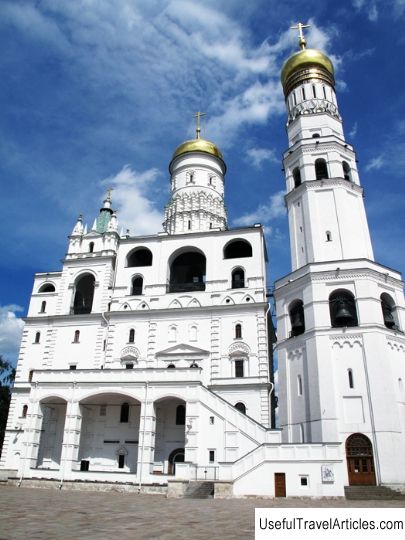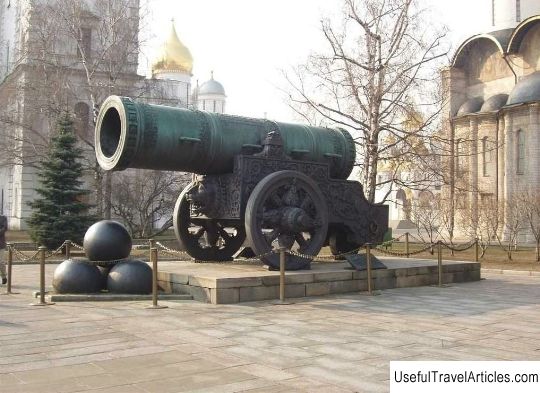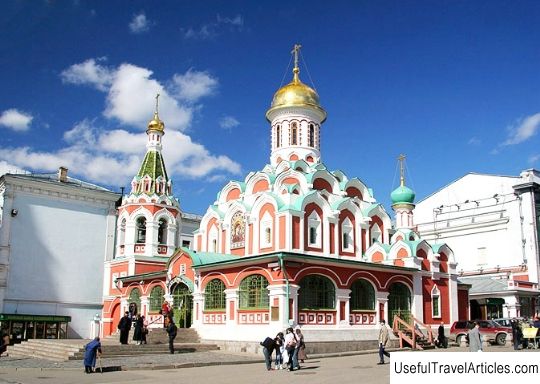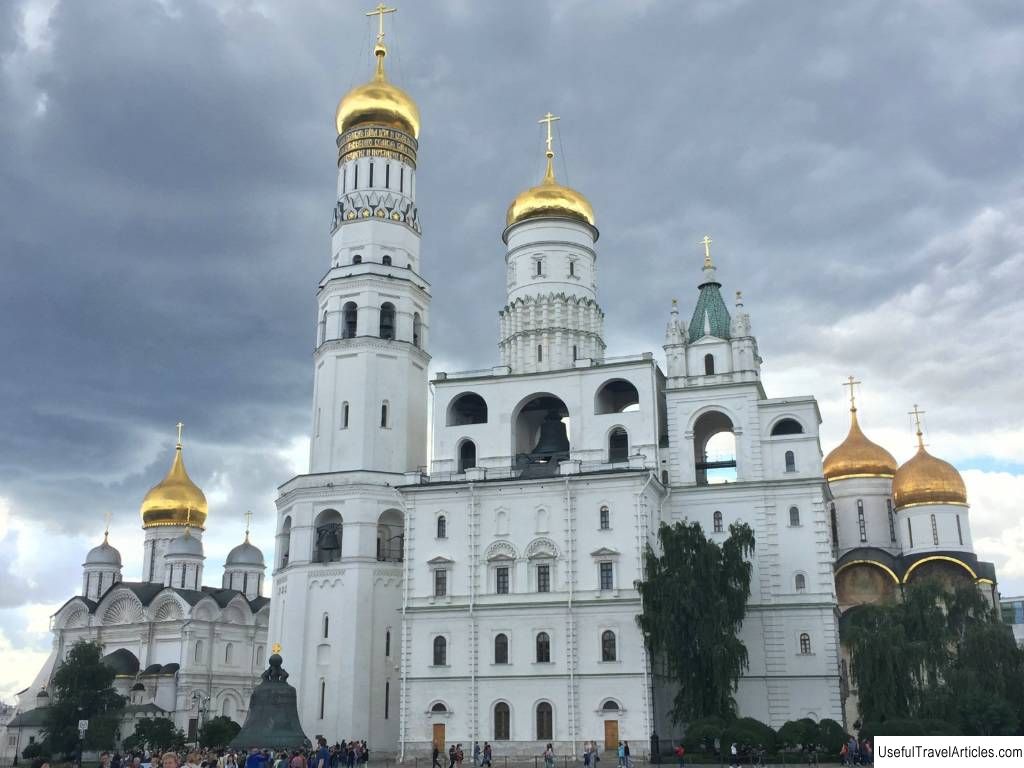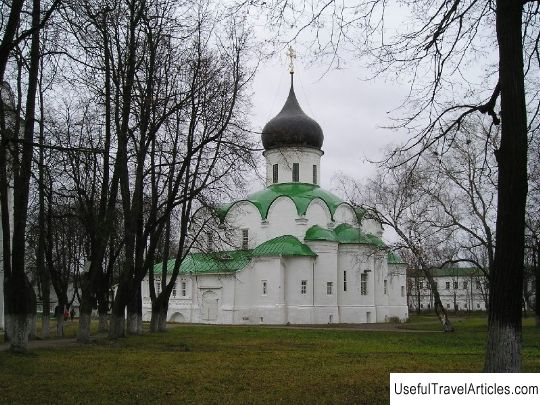Tsar Bell description and photo - Russia - Moscow: Moscow
Rating: 8,9/10 (12932 votes) 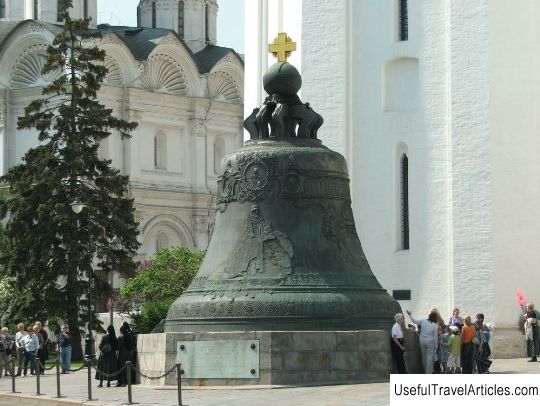
Tsar Bell description and photo - Russia - Moscow: Moscow. Detailed information about the attraction. Description, photos and a map showing the nearest significant objects. Photo and descriptionOn Ivanovskaya Square of the Moscow Kremlin, there is a remarkable example of the skill of Russian foundry workers, made by order of Empress Anna Ioannovna. According to the Empress's plan, the Tsar Bell was supposed to remind descendants of the times of her stay on the throne. The predecessors of the Tsar BellThe first huge bell, cast in Russia at the end of the 16th century, was Godunovsky . It was also installed on Ivanovskaya Square in the Moscow Kremlin in 1599. The weight of the Godunov bell was more than 33 tons . The bell in the Kremlin often became the subject of attention not only of Moscow onlookers, but also of foreign travelers who were on business or at leisure in the capital of the Russian kingdom. The Godunov bell served for about half a century, until it died in the fire of one of the most powerful Moscow fires, which in the 17th century happened frequently in the city and were distinguished by a special scale. At this time, Alexey Mikhailovich reigned , who decided to restore the bell. The sovereign tried to entrust the casting to Hans Falk - a bell and cannon master, who was born in German Nuremberg, and worked in Moscow in the middle of the 17th century. The German Falk set a number of conditions that did not suit Alexei Mikhailovich. The sovereign, in particular, did not want to wait five years, and therefore the Russian foundry masters took up the business - Danila Matveyev with his son Yemelyan and assistants. They were ready to use copper from the Godunov bell, which Falk strongly opposed. The new bell was ready in 1654. However, a year later the Great Assumption Bell had to be altered again, as the body cracked from too strong a blow of the tongue. The Russian master Alexander Grigoriev performed the work for ten months, and finally a new bell appeared in the Kremlin. He served people for about 50 years and in 1701 he died in a fire, like Godunovsky. Memory of Anna Ioannovna Anna Ioannovna ascended the throne in 1730 and almost immediately decided to leave the memory of the years of her reign to her descendants. The Empress ordered to re-cast the Great Assumption Bell “again with replenishment, so that there were ten thousand poods in the decoration ”. The weight of the new giant was supposed to be two hundred tons. The masters for the implementation of the empress's project were found in their homeland. Ivan Motorin by this time was already quite an old man and could boast of great experience in casting cannons and bells. He had his own foundry and carried out orders for churches and monasteries from different parts of Moscow. In 1702, his workshop completed an order for casting the Resurrection bell for the Ivan the Great Bell Tower. The master's stigma also stood on the Alarm bell of the Tsar's tower of the Kremlin, which was later "punished" by Catherine II for calling for the Plague Riot. Motorin made a small model and sent the drawings and estimate to St. Petersburg. Consideration and approval of his project took about two years, after which permission was obtained and foundry work began. How the Tsar Bell was cast Russian foundry worker Ivan Motorin started to implement his own project at the beginning of 1733 . The huge dimensions of the future monument to the era of the reign of Anna Ioannovna required manufacturing on site, and therefore it was decided to cast the bell directly on the territory of the Kremlin, where it was supposed to be installed. A pit was dug on the Ivanovskaya Square of the Moscow Kremlin, the depth of which was 10 meters. Foundry furnaces were placed around, each designed for 50 tons of metal. Brick gutters were folded in order so that the metal from the furnaces is poured into the mold. The space between the walls of the pit and the shape of the future casting was rammed so that the casing could withstand the pressure of molten metal. Ivan Motorin, taking into account the wishes of the empress about the size, requested additional raw materials, since the remaining from the Great Assumption Bell was not enough for him. The first smelting took place in November 1734 after a solemn blessing in the Kremlin's Assumption Cathedral. 83 people were involved in the work on Ivanovskaya Square. The melting was fraught with difficulties and not everything went as smoothly as we would like. The stoves periodically broke down, the hearths in the furnaces rose and the metal left, and repair work in a hurry became the cause of a fire hazard. The author and project manager died a year after the start of work. Further casting was supervised by his son, Mikhail Motorin . He recruited about 400 people to work, and as a result November 24, 1735 the copper alloy was released into the bell shape. The casting process lasted 46 minutes, and in each of them the mold took about seven tons of metal. After the casting work was completed and the bell cooled down, inscriptions and decorations were applied to its body. Shard and rise A year and a half after the installation of the Tsar Bell on the Ivanovskaya Square of the Kremlin, the Trinity Fire began in Moscow, which in terms of its scope and number of burned buildings were second only to the later, what happened during the war with the French. The wooden structure above the bell pit caught fire, and during the rescue operations The Tsar Bell collapsed and received cracks , penetrating his body through and through. On impact, an 11-ton piece broke off from the bell. There is a version that the bell cracked during casting, which was accompanied by many problems and technological errors. Other researchers believe that the fragment appeared after the fall of the Tsar Bell during its rise after casting. The application of embossing also did not contribute to the integrity of the body: the body of the bell was constantly cooled with water so that the work on the application of inscriptions and decorative elements would not melt it. The Tsar Bell lay in the ground for about a century. In 1821, the pit with it was surrounded by stairs and everyone could look at the capital's landmark of grandiose proportions. All projects to raise and restore the integrity of the bell were rejected as untenable, and only in 1827-1831 the architect Ivan Mironovsky managed to develop a viable plan for installing the brainchild of the Motorins' casters on a pedestal. p> The project was brought to life by Auguste Montferrand . Only preparation for the ascent took about six months, and the first attempt was unsuccessful: the bell was too heavy and the ropes could not stand it. The second attempt was made in June 1836, increasing the number of winches and once again calculating everything to the millimeter. Montferrand did it this time and the Tsar Bell was solemnly erected on a pedestal next to the bell tower of Ivan the Great. Figures and factsLike any landmark, the Tsar Bell gives rise to many rumors and legends, and some figures and facts about him become the subject of special interest not only for researchers, but also for tourists:
Modern advances in industry and science make it possible to cast a bell of even larger size and weight. However, its sound will not be very pleasant: the lion's share of the sound waves created by such a bell,         We also recommend reading Round Square (Lenin Square) description and photos - Russia - Karelia: Petrozavodsk Topic: Tsar Bell description and photo - Russia - Moscow: Moscow. |
